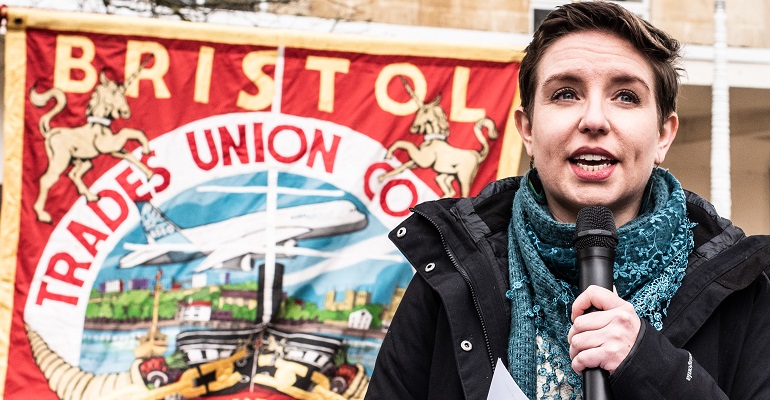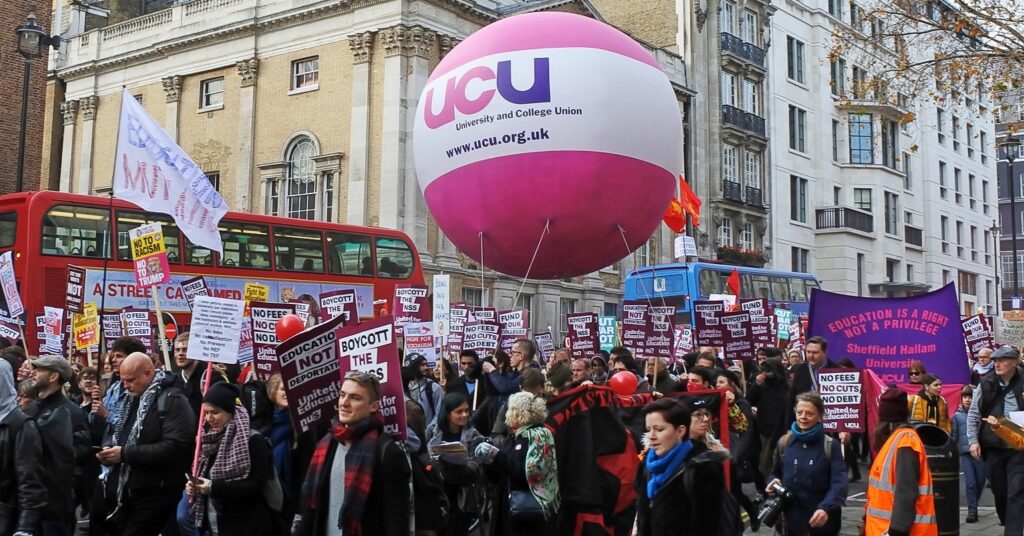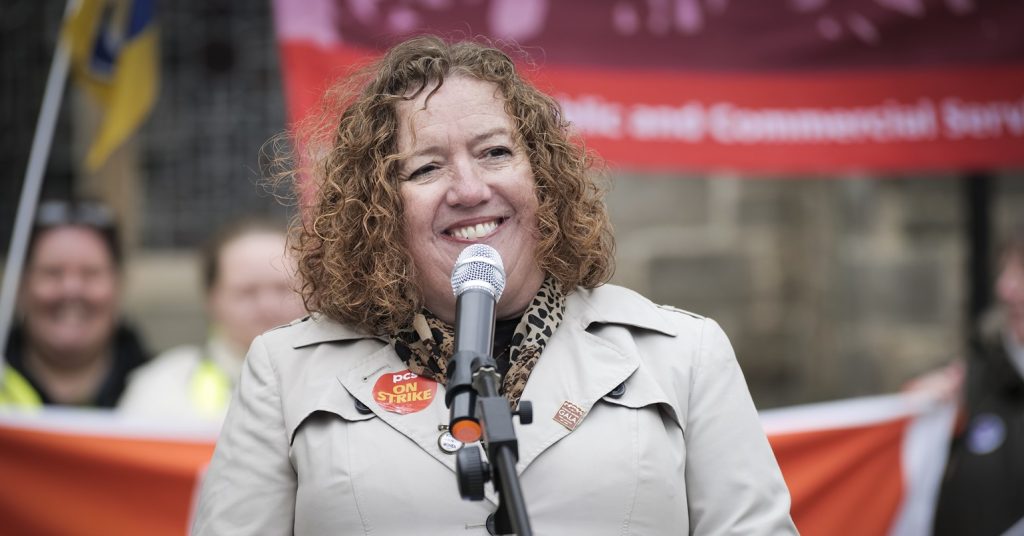With Labour selling out trade unions, Greens must strengthen our support for their struggles

The last few days have underlined something we have known for a long time. An increasingly right-wing Labour Party leadership, bent on marginalising factional opponents and appeasing the billionaire-owned press, is undermining unions.
Most notably, Keir Starmer has even gone so far as to sack a member of his frontbench, Sam Tarry, who spoke out in the media in defence of workers striking to defend jobs, pay and conditions.
But this isn’t a sudden development. Instead, the events of last week are the culmination of months and years of the Labour leadership distancing itself from its union affiliates. The TSSA’s Head of Communications, Sian Jones, has set out in shocking detail the sheer disregard for union perspectives in Labour’s higher echelons. It is increasingly difficult to see this pattern of behaviour as anything other than deliberate: a considered and tightly organised effort to avoid being led by the industrial needs and demands of the trade union movement.
Meanwhile, leaders of many unions have long realised the need for an independent political voice. Sharon Graham, Unite’s straight-talking General Secretary, has made clear that her members’ financial and political support for the Labour Party is conditional on results and urged Keir Starmer to “pick a side“. Since her election, Graham has put a renewed emphasis on industrial organisation, the need for a strategy that brings together shop stewards along industrial lines, and the strike as a central tactic. Unite’s protracted campaign and eventual victory in a bin strike in Labour-run Coventry has underscored this point. For a new cohort of General Secretaries, industrial power is a necessary precondition for advocacy and political influence.
But unions’ dismay goes deeper. Last week, ASLEF’s Mick Whelan publicly mused that the link between the labour movement’s traditional organs of industrial and electoral power – unions and Labour Party – may be “gone“. Coming from the co-chair (alongside Keir Starmer) of the National Labour Party and Trade Union Liaison Organisation, this should not be taken lightly. Another senior ASLEF official has resigned from the party in protest.
In this context, the actions of the Green Party could become increasingly significant. The party has already shown in 2022 that it can be a consistent voice in support of workers striking to defend standards of living, in the face of brutal attacks by Government and corporations. That support is increasingly visible.
Spokespersons and grassroots activists – urged on by the Green Party Trade Union Group – are making backing for workers in struggle into our ‘bread and butter’. Co-leader Adrian Ramsay has explicitly stated the party’s support for public sector pay rises that at least match the rate of inflation. During successive strike days by RMT, ASLEF and now CWU members, Greens across England and Wales have been quick to join picket lines in support of the unions.
This support is more than just symbolic. Green Party councillors and activists are finding creative ways to support workers and their unions. Working closely with Zoe Garbett in Hackney as she supports couriers organising with IWGB, and linking up with Zack Polanski as he backed care workers at Sage nursing home in Barnet to win a better deal, I have seen this first hand. The Green Party and the trade union movement share a commitment to defending public services and the workers who keep them running, and that is solid ground on which to build shared campaigns.
This is good progress and it should be sustained. But the party can and should go further. The increasing political independence of the trade union movement should be seen as a moment for the Greens to ramp up our support for workers’ organisations, making it a structural part of the Green Party’s operations and strategy going forward.
This is why I am standing for Trade Union Liaison Officer. As Chair of the Green Party Trade Union Group, I have been proud to support the party in building its links with organised labour. As Trade Union Liaison Officer, sitting on the party’s executive and working closely with the leadership, I want to help the party make the structural change in our approach needed to move to the next stage.
The party’s relationships with trade unions cannot be managed on an ad hoc basis. Instead, they need to be developed through the implementation of a strategy that cuts across everything we do as a party. Building on work I have begun, advising leaders and spokespersons on union matters, I will develop such a strategy and see that it is implemented.
But this strategy must go beyond our leaders and spokespersons and into the party membership at large. In my candidate statement, I have set out plans to equip and empower local Green Parties across England and Wales to build and manage strong local relationships with workers and their unions. This should begin with a thorough power-mapping exercise to understand current levels of trade union activity and relationships among activists, officials and councillors alike. A unified strategy, building on the findings and backed up by accessible campaign resources and advice, could enable local parties to set about developing union relationship in earnest.
With the Green Party Trade Union Group committee, I have already begun exploring ways to support Green councillors to support workers and unions in turn. With central coordination and resourcing, and working with the Association of Green Councillors, this could be supercharged. With more and more of our councillors in administration across the country, this work is becoming increasingly urgent. Our councillors already have a wealth of experience. Best practice in supporting unions should be shared and replicated as widely as possible.
The trade union movement is a crucible in which much of the best and most transformative policy ideas are forged. Likewise, Greens have already been working within their unions to advance pro-worker Green policies – like Musicians’ Union Regional Committee official Sam Murray, who successfully pushed his union to back a Universal Basic Income. Sam is not alone. The Green Party counts among its membership thousands of committed trade unionists just like him.
As Trade Union Liaison Officer, I will bring together Greens in unions, helping them to decide upon priorities for working together within their particular sector. Greens can act as a vanguard, pushing their unions to adopt transformative Green policies and urging their leaders to be ambitious in coordinating industrial action. Greens can also ensure their unions’ priorities are heard and acted upon by our party, keeping our party accountable to the organised labour movement.
By undertaking work like this, I can help to precipitate a structural and irreversible shift in how the party and our activists work with the trade union movement. This is my promise to every Green Party member if I am elected as Trade Union Liaison Officer.
But this isn’t all. And crucially, this is not the job of one person. We will all have a stake in making this happen, if it is to happen at all.
Close work with the trade union movement is essential to any truly just transition to a zero-carbon society. Those who stand to benefit from a continuation of the status quo – the wealthy and powerful – will never support our project. To succeed, we need active and consistent support from the mass of people who do stand to gain as a collective from the social transformation we want to bring about. As institutions of the working class, with the capacity to develop and wield enormous leverage on its behalf, trade unions are indispensable to any Green movement. If we are serious about overturning a social order that is bent on accumulating vast profits, at the expense of the planet we all live on, we need the power of unions and the creativity and strength of their members.
Building ever closer links with the UK’s trade unions is everyone’s business. If you elect me as the Green Party’s Trade Union Liaison Officer, I would strive to put these words into practice.
PS. We hope you enjoyed this article. Bright Green has got big plans for the future to publish many more articles like this. You can help make that happen. Please donate to Bright Green now.
Image credit: Matthew Phillip Long – Creative Commons




Leave a Reply